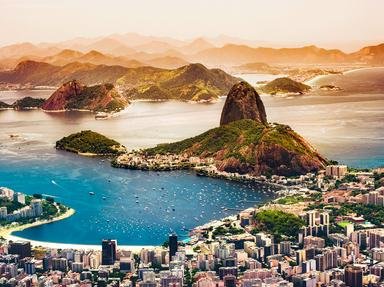
Samba Pa Ti Trivia Quiz
Cities of Brazil
The world's fifth-largest country, Brazil is like a small continent, home to a wide variety of geographical landscapes and some of the largest cities in South America. Can you pick the ten major Brazilian cities out of this list?
A collection quiz
by LadyNym.
Estimated time: 3 mins.
- Home
- »
- Quizzes
- »
- Geography Trivia
- »
- South America
- »
- Brazil